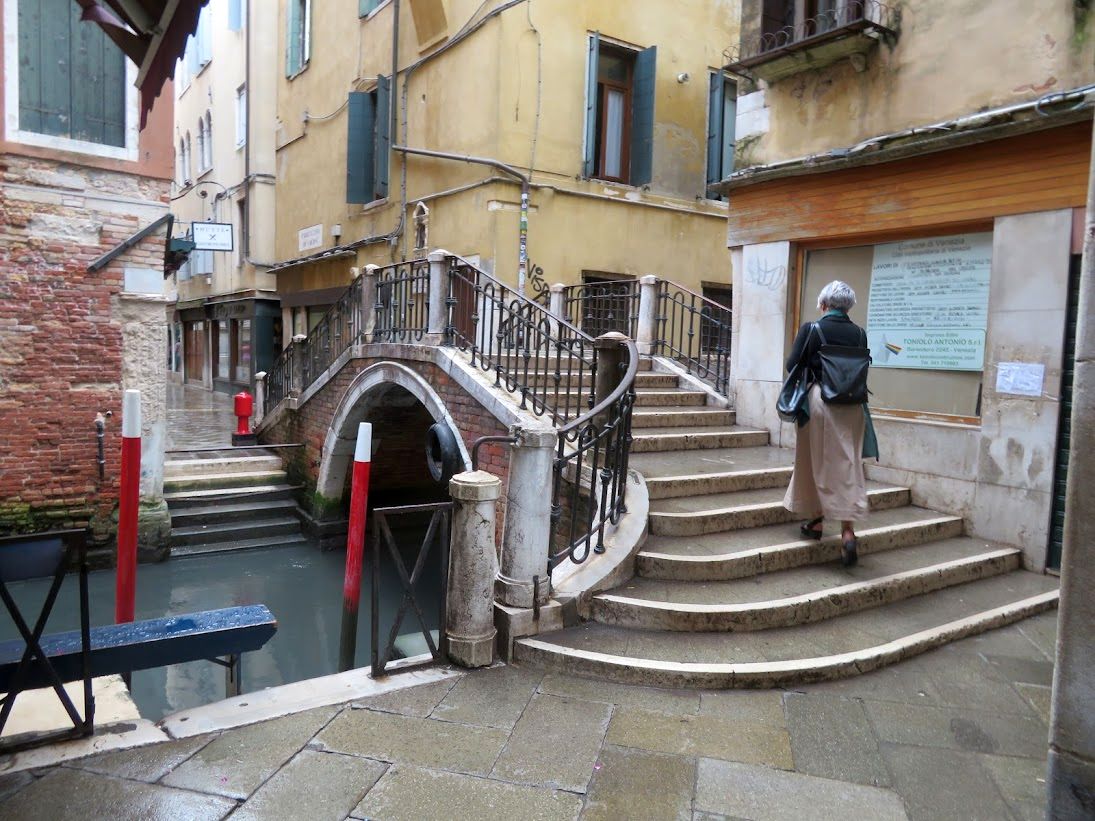Generations have made their fortunes, to one degree or another, promoting Venice as a city of mystery, secrets, enigmas. What amazes me, though, is how many discoveries one can make by just looking around. It’s not as if you have to go looking for secrets — there are plenty of extraordinary things sitting right out there in the open, in front of everybody, but that go unnoticed for ages.
I have walked with Venetians, on our way to do something, who have suddenly stopped, looked up at/around/behind/next to some normal thing (a bridge, a window, a door) at something strange or beautiful and said, “I never saw that before.”
So here is something I saw because I looked up. Was it a secret? Only from me until that afternoon.
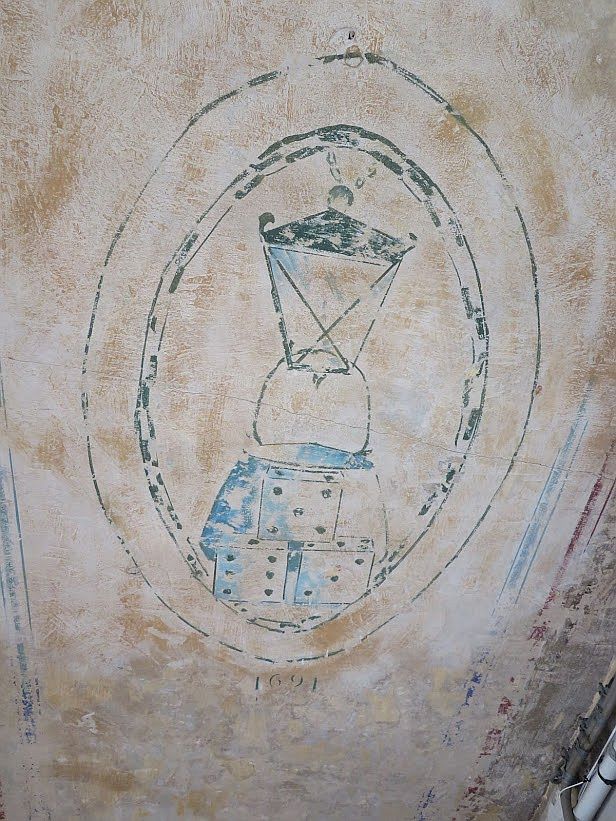
This fresco isn’t far from San Marco at the intersection of the Rio Tera’ de le Colone and Calle dei Fabbri. Here is a map to clarify.

Looking up as I walked west along the columned walkway …
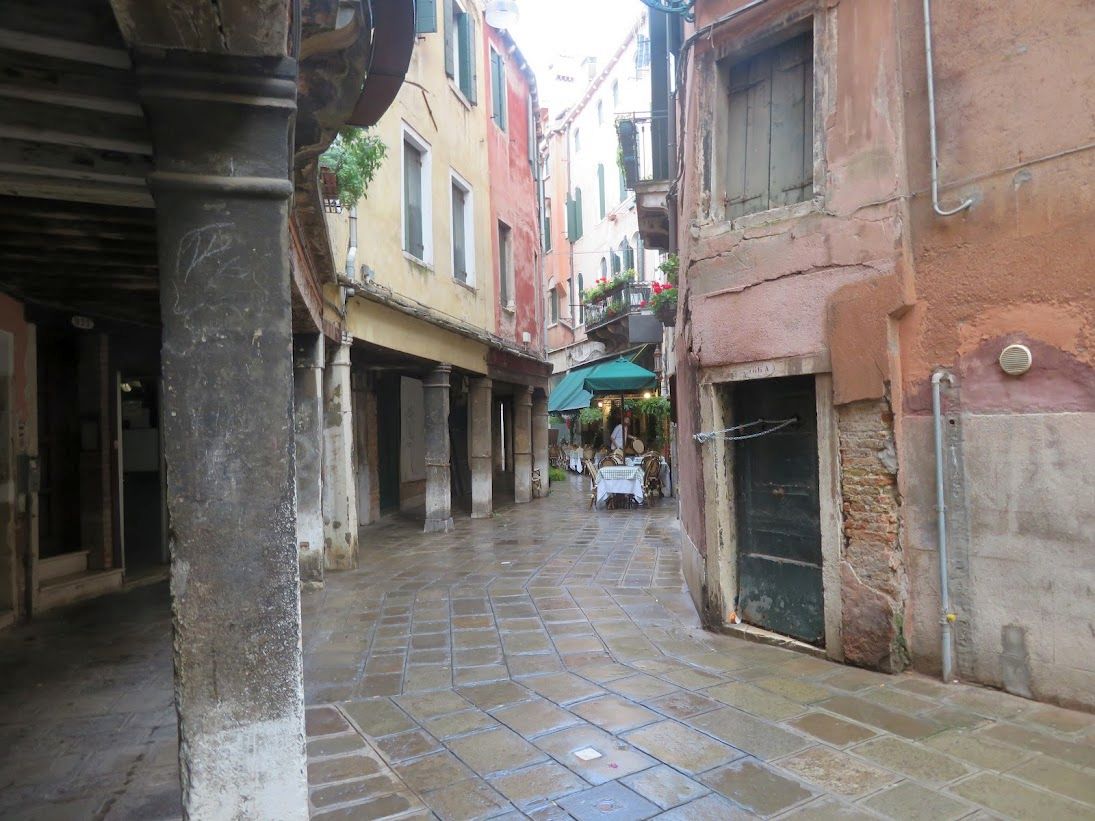
I came upon this, as previously noted:
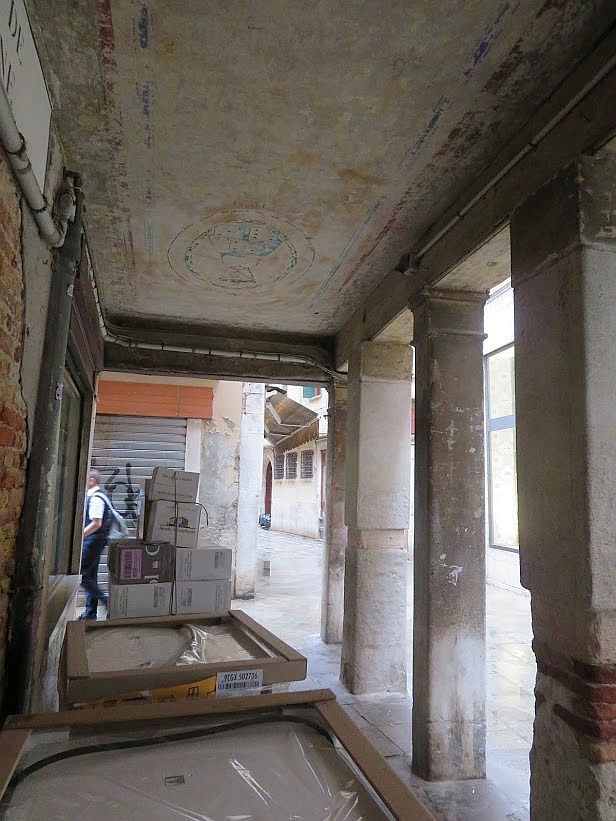
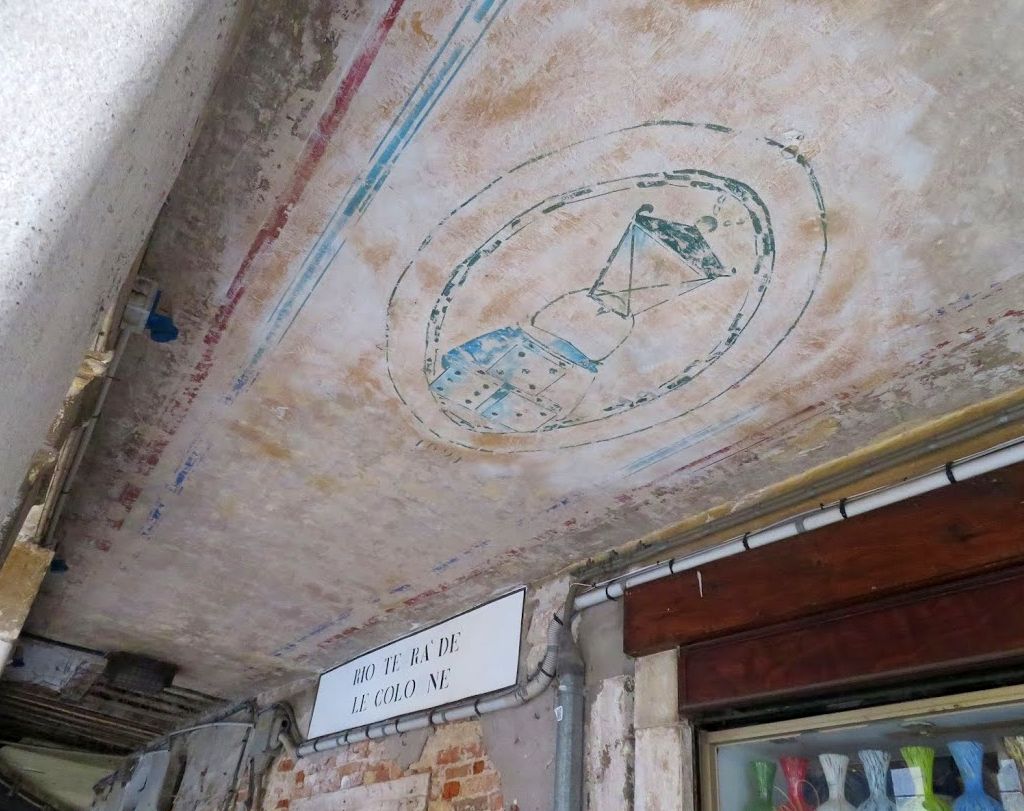
Back to the fresco at hand. My first theory was wrong, of course, but I wasn’t alone in supposing the dice in this design to be a mystic reminder of what may have been a gambling establishment back in 1691. There were plenty of them, but people probably didn’t need signs to show them where to go, mainly because gambling was mostly illegal.
Rummaging through the internet I found that several people had also found it reasonable to suppose that gambling inspired this curious fresco. But then I was even more surprised to discover a much simpler explanation. No need to go any further back than the 1980s and a particularly whimsical artist named Dorino Cioffi (born 1932 in Este, Veneto region), now living and working in Venice.
I could go find him and ask him about all this, and I’m not saying I won’t, but I wanted to get this little tale out into the ether. Whatever his motivations might have been, and however he may have managed to get permission to paint on a public space (“No worries, it’ll be down by Wednesday”), he created this diverting little image. Fooling people is so much fun. Carnival comes to mind.
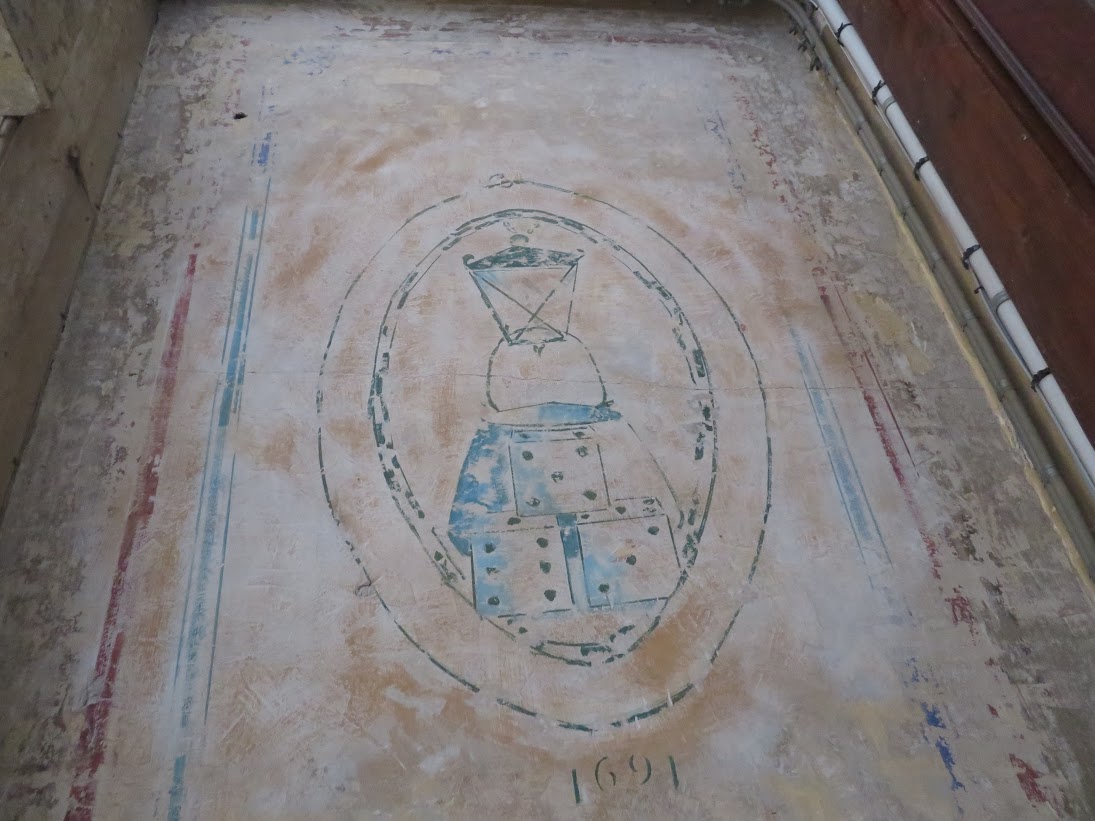
For reasons as yet, if ever, to be discovered, the artist devised this image to refer to the three bridges nearest to the location of the fresco. I don’t know why that spot was chosen, though if you’ve decided you want to paint on an outdoor ceiling, your options are already limited.

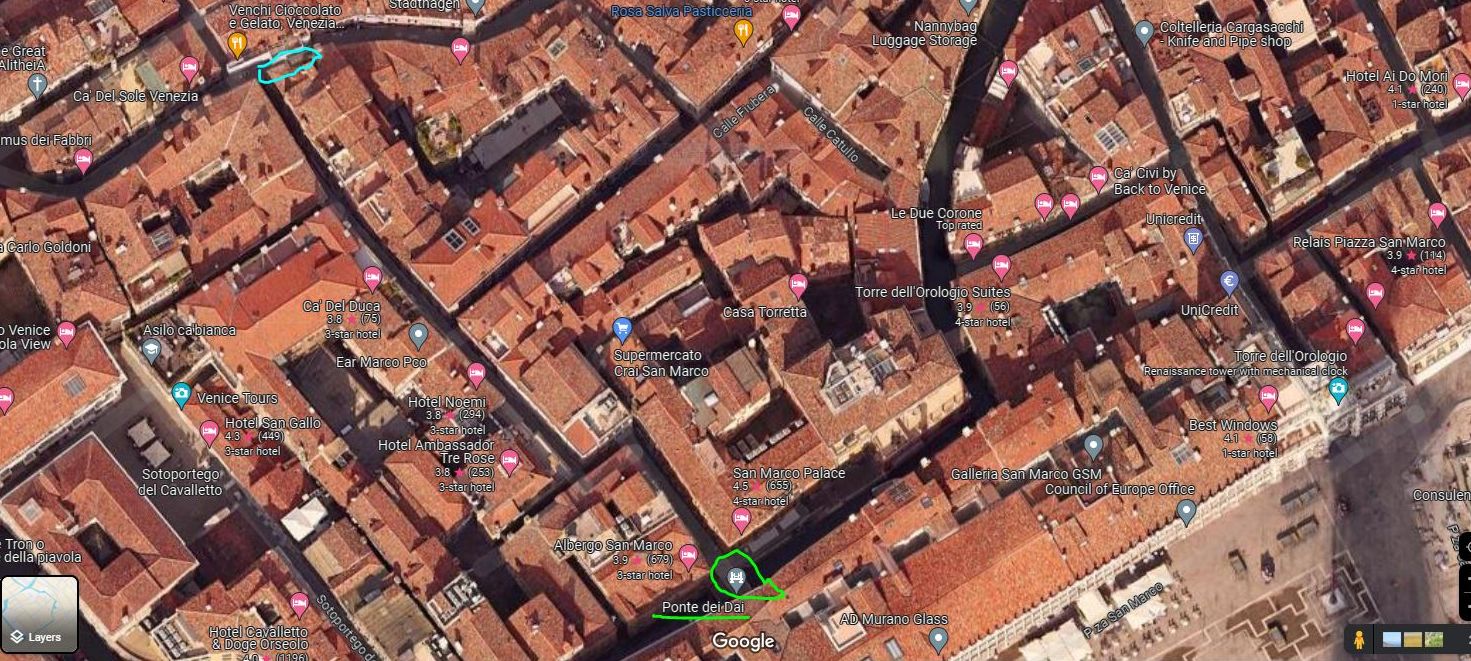
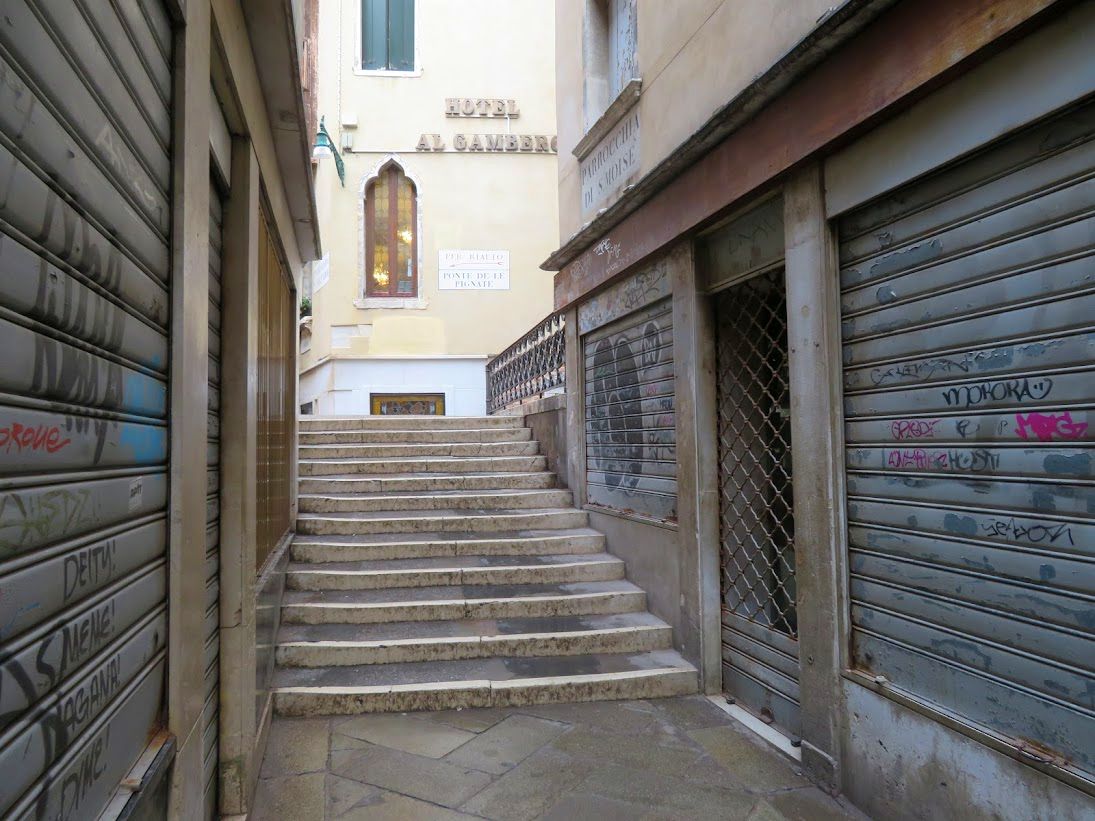
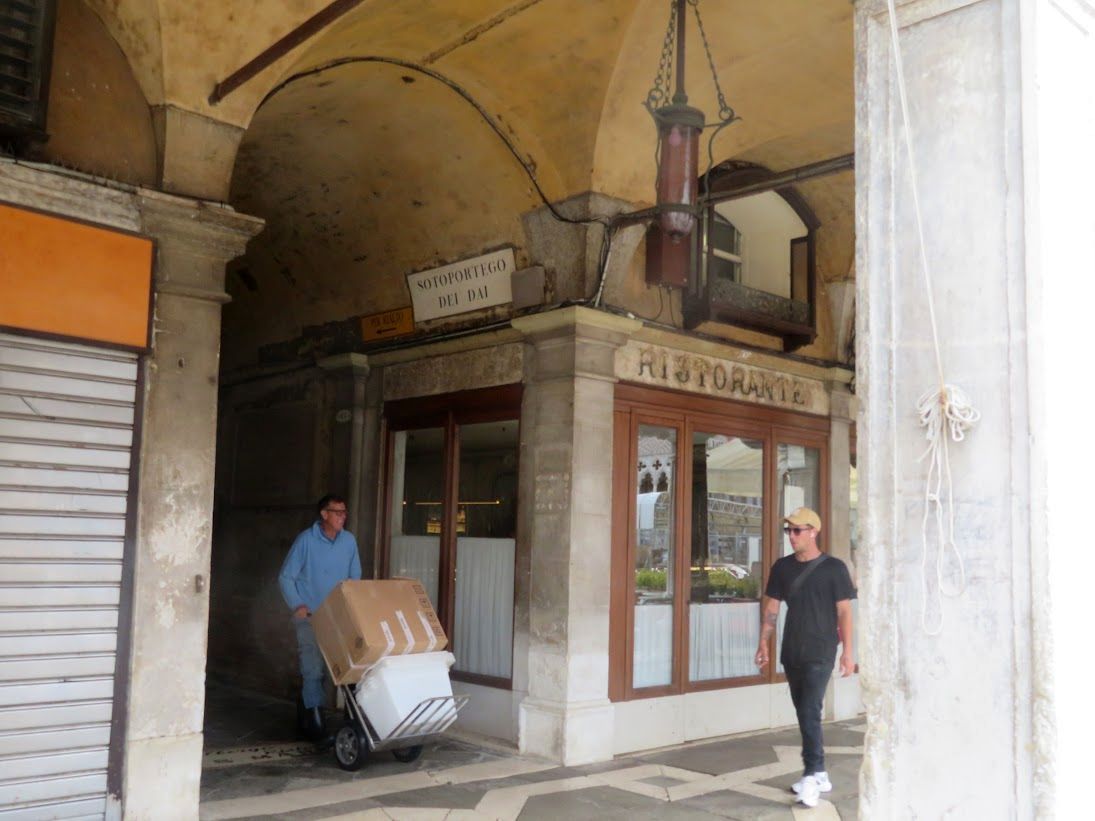



The names of the bridges, like the streets, referred to something that was made, or sold, or both, on or near that bridge. As far back as the 1200’s the feraleri, or makers of streetlights (ferali), had set up their shops on nearby streets, as well as on the bridge itself (do not ask me how that worked). The same explanation applies to the pignate (cooking pots).
As for the dai (the original name was dadi, or dice), they were not so much produced as simply sold near their eponymous bridge. This is amusing, considering that gambling with dice was forbidden. You and your friends might call a place the “bridge of crack cocaine” if that’s what makes sense to you, but painting the name on an official street sign would be strange. I think we can agree on that?
You may be awaiting more information on the pots and the dice, which I suppose there is, but the streetlights turn out to be far more interesting than the other two items put together. (Do not recommend.) As I leave the eccentric fresco behind, though, I can say that without it I almost certainly wouldn’t have given a thought to the lamps.
My next post will be shedding plenty of light on the subject.
